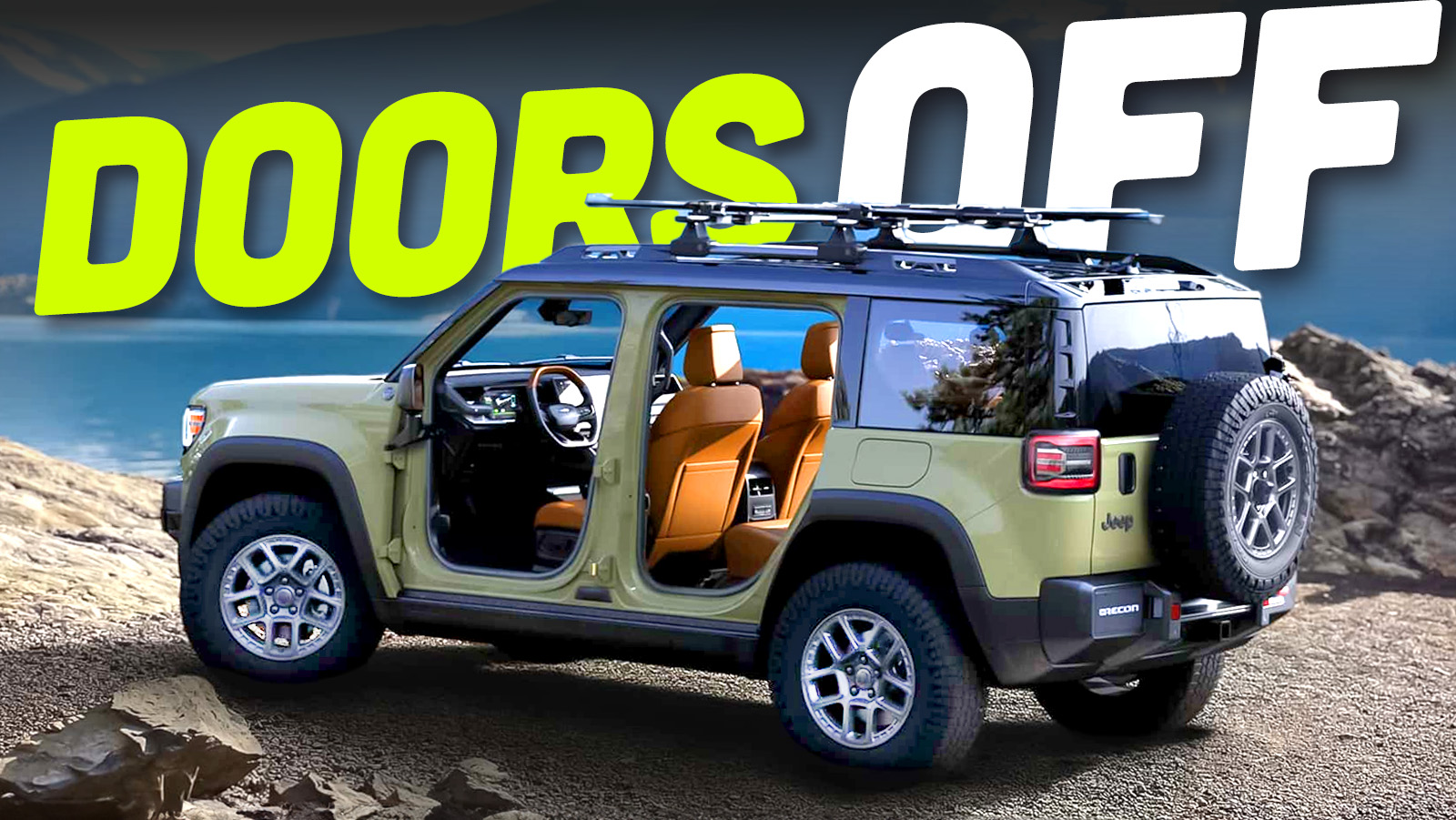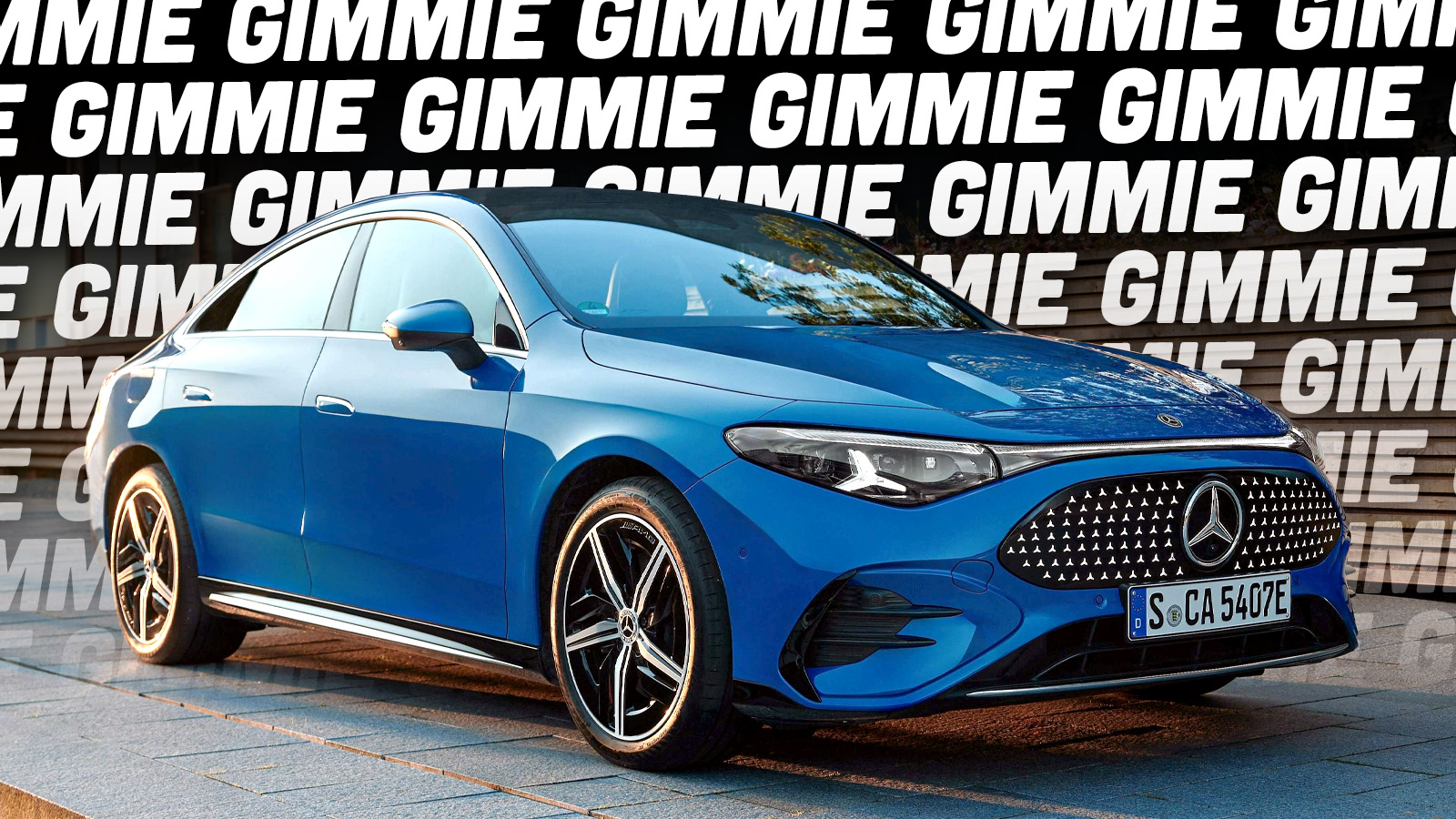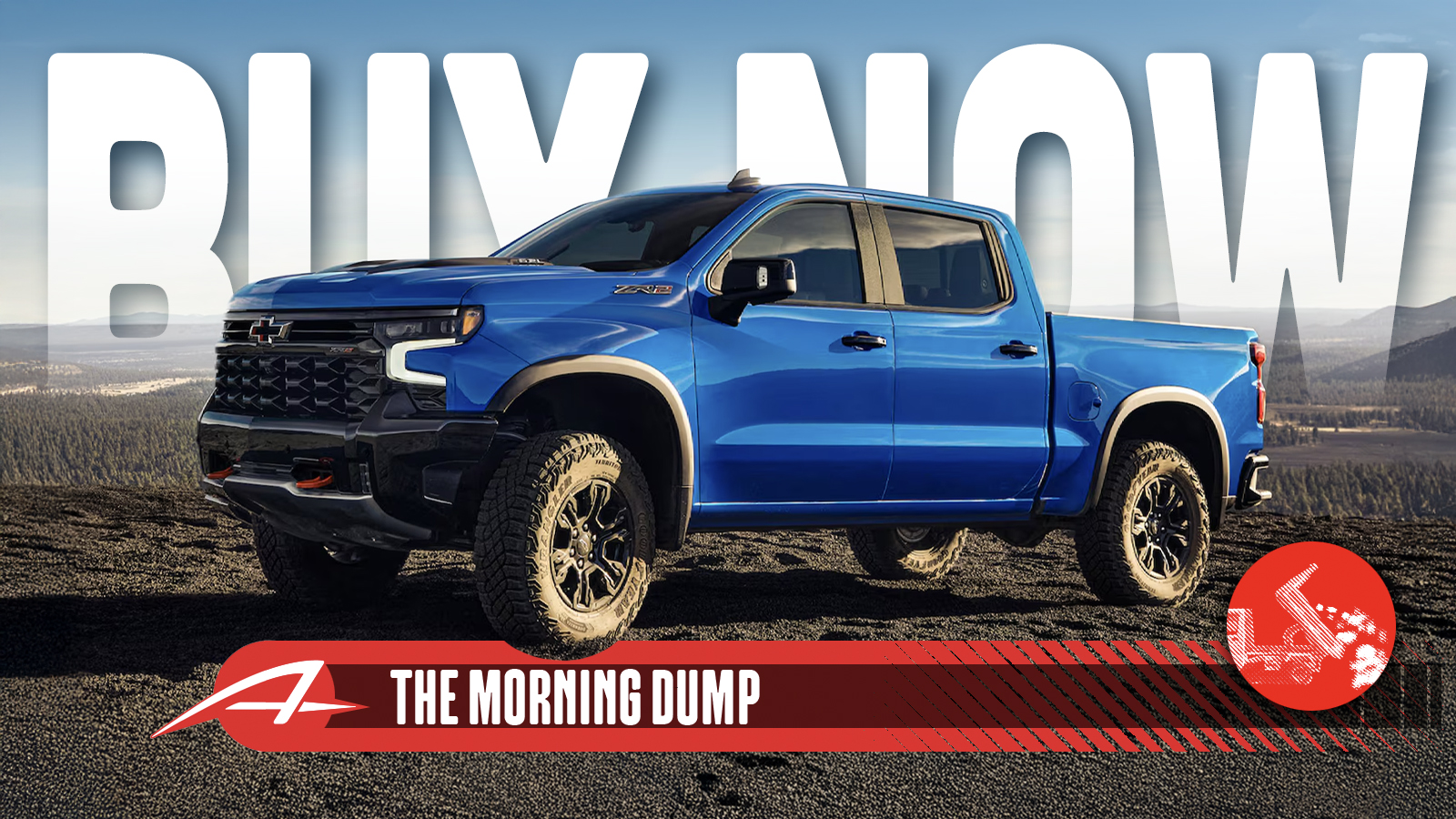Good morning! I am, once again, writing to you from the past, not knowing whether you enjoyed yesterday’s nasty Corvettes or not. As I write this, you haven’t even seen them. This is weird. We’re in totally uncharted Shitbox Showdown territory here, people. Anything could happen. Best keep your wits about you.
Today, we’re going to talk a little bit about dead cars and how they got there, what constitutes an “old” car versus a “classic” car, and then take a look at a couple of old dead cars that may or may not be classics. Both of today’s choices come from the era currently celebrated by RADwood, which has morphed from a car show into something of a Renaissance Festival for the Reagan/Bush era. And I’m not sure how I feel about that. As a wise philosopher of my generation once said, “All the great themes have been used up, turned into theme parks.” Alex P. Keaton won, it feels like, and figured out how to sell our own nostalgia back to us for a hundred bucks a pop.
On the other hand, I have a deep affection for the cars, music, and movies from this era, and I probably always will. As annoying as I found the Baby Boomer obsession with 50s and 60s culture growing up, I get it now: the more things change, the more you feel like staying the same. You look back fondly at a Cavalier Z24 not because it was a great car, but because you remember it. You smile when you see one, for the same reason you smile when a Debbie Gibson song plays in the grocery store (this actually happened to me not long ago). Nostalgia, as they say, is a hell of a drug.
The danger, of course, is overdoing it, trying so hard to cling to the past that you forget to live in the moment. Pulling up Technotronic on Spotify is one thing; collecting a yard full of broken ’80s cars is another. When I was growing up, the guy who lived across the street from my grandparents had a similar yard full of cars, mostly early-mid-50s Fords, all slowly rotting away in the weeds. They were “classics,” he told me and anyone else who would listen. I think about him sometimes, when I look at my own collection of model kits and RC cars from the 80s and 90s. Is it so different? Well, yes; it takes up a hell of a lot less space, for one thing, and my risk of tetanus and spider bites from it is nil. But am I just doing the same thing, gathering up relics from a bygone era to help me cope with the modern world?
I don’t know. I can’t figure it all out today, sir; I’m just hanging with your daughter. Let’s look at some cars.
1986 Dodge Daytona – $2,000

Engine/drivetrain: 2.5-liter OHC inline 4, three-speed automatic, FWD
Location: Mesa, AZ
Odometer reading: 162,000 miles
Operational status: Has not been started in 15 years
The Dodge Aries and Plymouth Reliant may have saved Chrysler, but they were, to put it mildly, frumpy. Both GM and Ford had upped their pony-car games at the start of the 80s, and Chrysler hadn’t really had anything to compete with them since the E-body Challenger and Barracuda a decade earlier. That changed in 1984 with the introduction of the Daytona, and its sister model, the Chrysler Laser. They had sleek styling that was more than a match for the Camaro, Firebird, and Mustang, a modern turbocharged engine, and a hero-car spot on a popular TV show.

Of course, just like most Mustangs weren’t GTs and most Camaros weren’t Z28s, most Daytonas weren’t the Turbo Z model. This car, with the plain old 2.5 liter four, was a lot more common. It certainly doesn’t live up to the promise of its flashy styling, but remember that both the Camaro and Mustang’s base engines were also four-cylinders, with about the same power. You could liven things up a bit by ordering it with a manual transmission, but the original purchaser of this one opted for the automatic. It has been parked since 2010, but that’s all we know about its mechanical condition. Sounds like a good excuse for a turbo/five-speed swap, if you can track down the parts.

Daytonas and Lasers were available with a wide range of interior trims. This one looks pretty plain, with crank windows and cloth seats, though it does have a fancy stereo in it. I miss the days when options were available ala carte, and you could get a car with just the stuff you wanted and nothing else. This Daytona has Chrysler’s Electronic Message Center in the dash, but I don’t think it still talked in ’86. It looks like it’s in reasonable shape, just dirty from sitting.

Back in 1986, we had no idea that the base color for Chrysler’s plastic bumpers was yellow, but it didn’t take very many years to find out. Paint flakes off all of them eventually; flexible paint coatings hadn’t been perfected yet. Worse, on the nose of this one, there’s a weird melty hole next to the driver’s side headlights. Hopefully you can fill that in and patch it up with something; I can’t imagine replacement front bumper covers for four-eyed Daytonas are easy to find. At least it’s an Arizona car, so it isn’t rusty.
1992 Jeep Comanche – $2,000

Engine/drivetrain: 2.5-liter OHV inline 4, five-speed manual, RWD
Location: Louisville, KY
Odometer reading: 52,000 miles
Operational status: “DOESN’T RUN!”
I’ll probably catch some flak for saying this, but the Jeep Comanche always felt to me like a solution to a problem that didn’t exist. If you already have the Ford Ranger, Chevy S-10, Dodge Ram 50, Mitsubishi Mighty Max, Toyota Pickup, Nissan Hardbody, and Isuzu P’Up to choose from, do you really need a Jeep pickup based on the Cherokee too? I guess some people did, because Jeep sold quite a few, and the Comanche still has its followers today.

This one looks like a really basic model, with AMC’s 2.5 liter four-cylinder, a five-speed stick, and 2WD. The suspension on all Comanches was basically the same regardless of the number of driven wheels, which means this truck has a straight-out-of-the-1950s solid axle in the front, unlike the independent setups on all its competitors. Does that mean these can suffer from “death wobble” too? I wonder. You’re not going to find out any time soon; this truck does not run, though the seller couldn’t be bothered to tell us why.

Inside, it’s much more like its competitors, with crank windows, a straightforward dashboard layout, and a bench seat with a notch in the middle to clear the floor-mounted shifter. It does have air conditioning, which is a nice bonus on a plain-Jane truck like this. It’s in really nice shape inside, which makes me think the low mileage listed might be original. So why hasn’t it been fixed and put back into service?

I’ve said it before and I’ll say it again: Stripe packages on trucks need to make a comeback. Gotta break up all that plain white paint somehow. This one’s stripes are admirably funky and look like they’d be right at home on a Dixie cup. The truck looks rust-free and straight, which again begs the question: why is it being sold as non-running? What happened to it?
Someone, somewhere, is salivating at the thought of bringing both of these cars back to life. There’s an ass for every seat, as they say, and I know folks who are enormous fans of both the Dodge Daytona and the Jeep Comanche. Are they worth two grand just for the starting point? I guess that depends on how much you want them. You tell me. Which one of these Rad-era Rip Van Winkles would you wake up?









I checked the Jeep Comanche box just to be a jerk. I want to change my vote. Now. May I speak to your manager?
Between the two vehicles, “not running” is much less frightening with the Jeep Comanche than it is with the Daytona. The bench seat in the Comanche just makes the cab look like a dystopian version of the interior of my 1989 XJ. Otherwise, everything from the B-pillar forward is XJ compatible, including the doors, hood and fenders. If the bed is rusted, make it a flatbed stake rack. I reject the Comanche for one reason; 2WD. The 4WD Comanche Pickup probably waffle-stomps the competition in off-road capability. Otherwise, I doubt that there is anything that would distinguish the Comanche, and there is no way that the Comanche could even aspire to reach the exalted status of the Toyota Pickup in the 1980s/early 1990s.
Speaking of (in hushed, reverent tones) the Toyota Hilux; if memory serves, Toyota was the first major manufacturer to apply amorphous, pixellated body side graphics that suggested forward motion while breaking up large, plain surfaces. My friend inherited a 1987 Toyota Xtra Cab SR5 from his grandfather recently, and he had it repainted in the original color. It looked off, and we couldn’t figure out why until he pulled out a picture of him sitting on the edge of the bed. Then, it struck us: graphics. The Toyota looked naked without its artfully sloppy paintbrush swipe along its flanks. S-10s and Mitsu Mighty Maxes did not look good with those same graphics; the Nissan Hardbody wore them well, and the Ranger only looked good when it was wearing the two-tone hand-me-downs of its big brother.
Lastly, the Dodge Daytona. Never cared for them, the filthy upstart usurpers. I owned a 1986 Dodge Charger 2.2. It was jet black, and it had a silver stripe from the hood to the hatch, with graphic on the hood that said, ‘CHARGER’ and underneath, scaled to fill the space, ‘2.2’. The ‘Charger 2.2’ graphic was almost 2 feet by 2 feet on the hood, Chrysler shouting its answer to the ‘screaming chicken’ graphic on the Trans Am. Handsome (and large) as it was, that graphic did not generate one additional pony underneath that hood. It was 101 HP all day long, but in a stretched Omnirizon platform that weighed less than 2500 lb and had a well spaced 5-speed transmission, it was a fun car to drive, it did not extort me for insurance money or fuel, and it was…reliable…ish. For a Chrysler. I ended up trading it in for a 1985 Mustang LX 5.0 hatchback, which also didn’t kill me on insurance (apparently GT was a much scarier concept to actuaries than 5.0 liters of displacement; I bet driving for pleasure was also inconceivable), was much, much faster, and got 25 mpg highway. Point being, the Dodge Daytona was created to supercede the Charger, yet they coexisted for a few years; both cars were afflicted with “Chrysler Quality”; despite being derived from much higher volume selling, middling vehicles, neither model has a large parts inventory, unlike the Fox body Mustang. At least my Charger met people shouting, ‘CHARGER!’. The Daytona had its eyes half closed and downcast.
I know which one DT is bringing home
Just needs some Jazz graphics to finish the look:
https://en.wikipedia.org/wiki/Jazz_%28design%29
“It does have air conditioning, which is a nice bonus on a plain-Jane truck like this. It’s in really nice shape inside, which makes me think the low mileage listed might be original. So why hasn’t it been fixed and put back into service?”
There’s no belt on that A/C, maybe no belts at all. Maybe they broke and the owner is too lazy to put on new ones?
I have wanted a Comanche for a while but they are stupid expensive
In 1984 I bought a new Daytona Turbo. It was a mechanical nightmare. My best friend bought a Daytona base model. His was actually a more pleasant daily driver being quieter and less prone to NVH. Mine was faster but had the ride quality of a buckboard. Get the Jeep.
The Jeep with the 2.5 was a big player in the mini truck race series. I vote for that.
Getting an 80’s Jeep without 4WD seems a bit wrong, but I’m taking just about any small truck that isn’t a complete POS for $2k. Put a motor in it and I’m doing a lot better than all the other compact pickups I see for sale.
The Dodge can go to the scrap heap with that C3 Corvette from yesterday.
Ugh stop putting Comanche’s on here or I’m going to have to buy one again…still miss it
I want the Daytona for it’s cool ‘oh so 80’s’ grid paper looking instrument panel and gauge background graphics. That theme was a prevalent trend back then. So much neater than the black piano trim trend of current days. Gawd I miss the 80’s! Well, some of it anyways.
Unlike the Daytona, the Comanche won’t break one week later. Chrysler built total shit back then.
I had an ’87 Comanche for a while, same spec. Poser-Jeep, I called it.
It was really fun while I had it in my early-to-mid 20s, but I don’t think I’d have one again…though I’ll take it in this comparison.
For years I remember wondering if the temp warning light worked, because mine had no gauge…just that warning light. I learned the hard way the light didn’t work, as it remained dark while I pulled off the freeway with steam pouring out from under my hood. But a new water pump and gasket later, the less-than-exciting 2.5L engine was amazingly no worse for wear and ran fine. The early fuel injection was better than expected and never gave me any issues.
But overall it was loud, uncomfortable, suffered from Death Wobble on highway expansion joints, and I loved it, rationality-be-damned.
Is love ever rational? These little trucks were sharp looking. Your story about the failing “idiot light” as my dad called them, brings back some familiar memories. Had one fail me once, too. Why does stuff like this always have to break when it’s dark or raining cats and dogs?